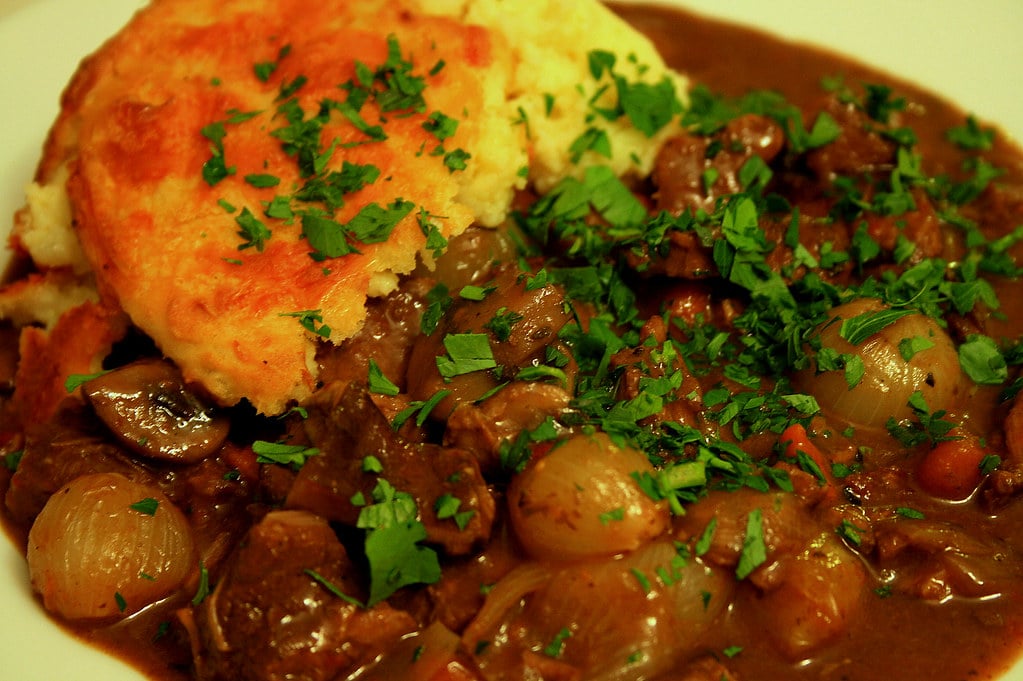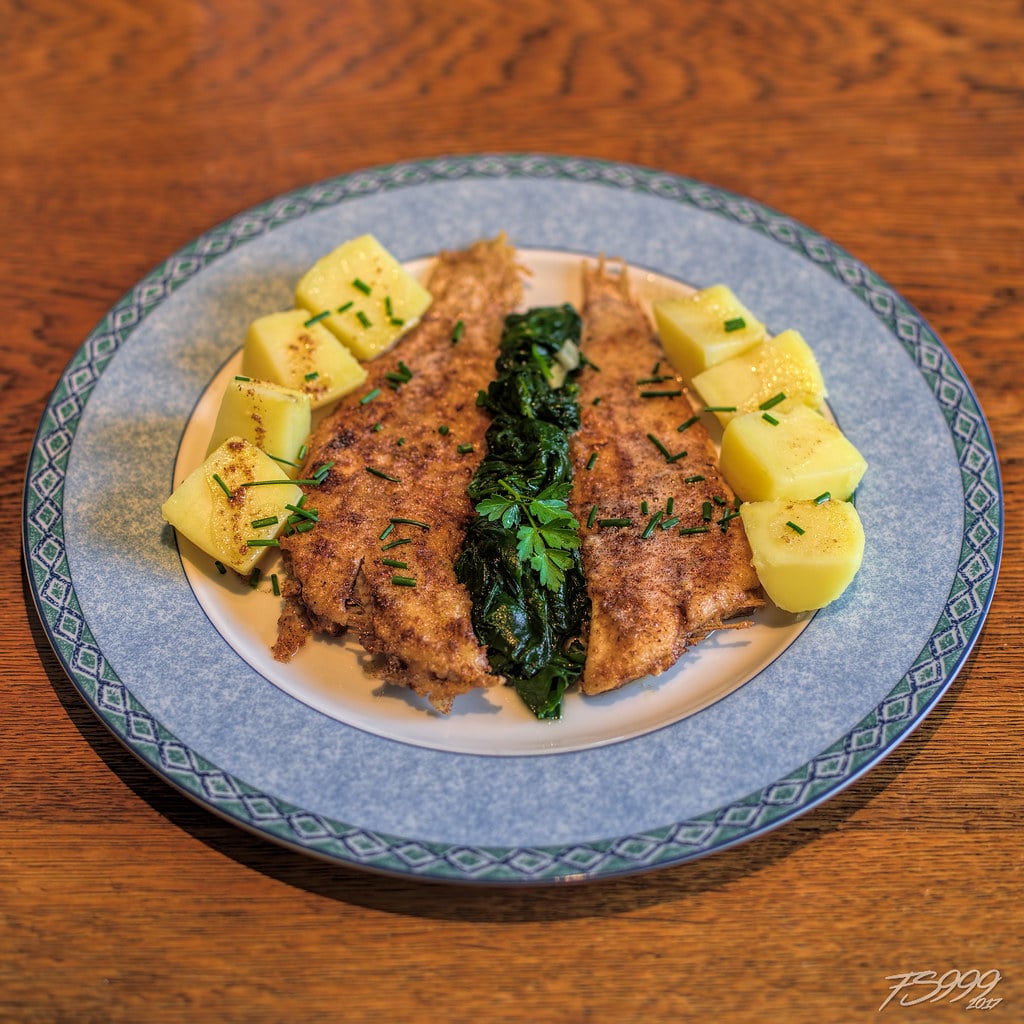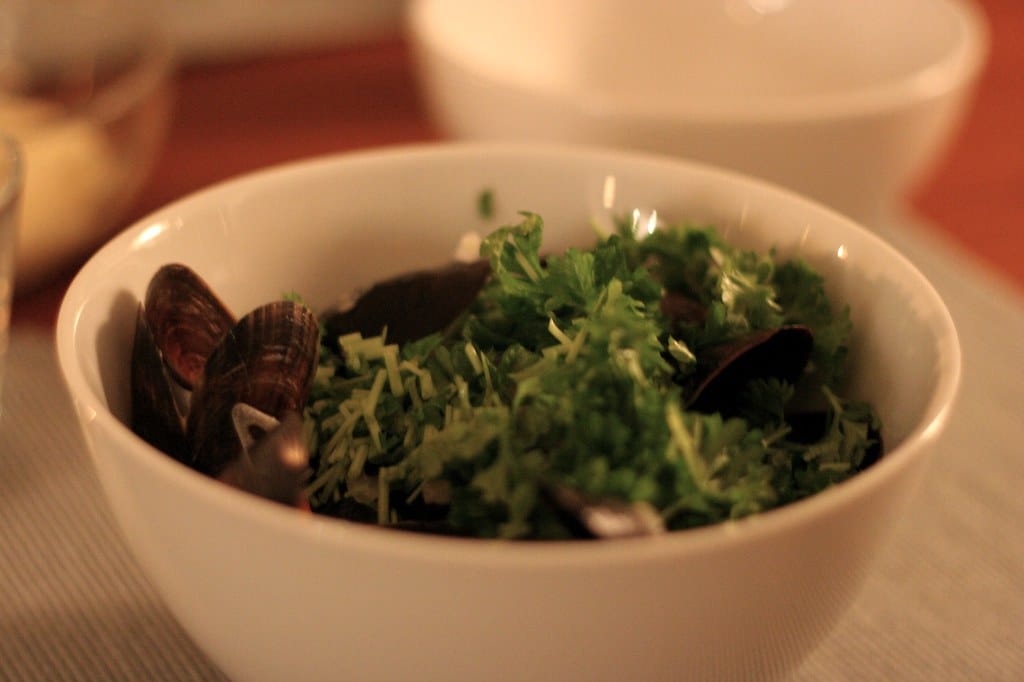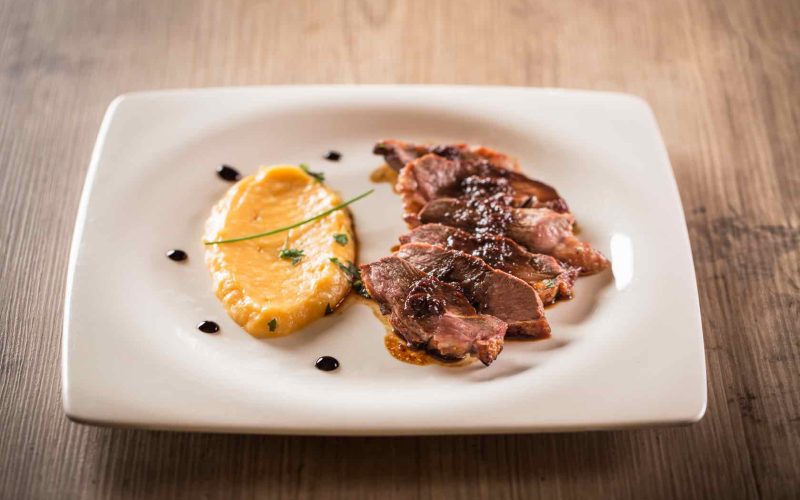Taste is undoubtedly a personal experience; what tickles one person’s taste may not appeal to another.
However, identifying methods and dishes from other international cuisines that have affected and inspired the culinary world can help throw light on how food has changed over time.
Every nation takes great pleasure in its regional delicacies, but French savory food goes above and beyond.
Famous French chef Auguste Escoffier developed the Escoffier School of Culinary Arts, emphasizing the value of French cuisine internationally and even claiming that it has come to rule the world.
Although it may sound conceited, the French propagated their culinary traditions as they occupied different parts of the world.
The ceremonial aspect of the traditional French eating experience is rooted in tradition.
Yet, many elements are still relevant today, such as the French’s contribution to the idea of a restaurant in the first place.
Check out those savory French food you can’t wait to taste!
1. Boeuf Bourguignon

Boeuf bourguignon is a French savory food, a beef dish from Burgundy ranks highly among warm, filling stews.
It’s no secret that the hearty dish is a favorite, and a 2017 poll revealed that most respondents believed it to be France’s national cuisine.
The stew originated in the Middle Ages and was formerly made as a creative way to tenderize inexpensive cuts of beef.
2. Steak Frites

A meal of steak frites is the epitome of simplicity unless you’re ordering it in a busy Parisian café.
Although some people may find steak and fries to be monotonous, good execution elevates it to a whole new level.
The French savory food is popular in France and Belgium, where it is traditionally served with a glass of wine or a pint of beer as a quick dinner at a bistro.
The only choice you have to make is how you want your steak prepared; if you want to be served in Paris, avoid well-done.
The meat is served plain with the chef’s preferred sauce, whether it is pan-fried or grilled.
Instead of ketchup, béarnaise or hollandaise sauce is frequently served alongside her.
The steak may also be topped with cooked shallots or onions, depending on the cooking.
The variety of fries—from thick-cut to crispy matchsticks—makes them ideal for eating between a mouthful of steak.
3. Chicken Cacciatore

It won’t take long to recognize the dish’s resemblance to the well-known Italian chicken cacciatore, although chicken chasseur is the French name for the hunter’s dish.
The traditional French savory food is a simple one-pot preparation bursting with flavor that includes chicken, mushrooms (traditionally gathered during a hunting journey), tomatoes, herbs, wine, and cognac.
Fresh tarragon and parsley, which perfectly complement the mushroom and poultry, are frequently used in the recipe.
The chicken is typically browned before being combined with the various seasonings and slow-cooked to completion to give additional flavor.
Like other traditional dishes, chicken chasseur is rooted in a rural custom, while other accounts credit Duke Philippe du Mornay with creating the sauce.
Other sauces, like Mornay, were made famous by The Duke. Even though the typical city inhabitant today doesn’t go hunting for their meat, this French savory food nevertheless enjoys popularity because it has all the satisfying components of a full supper.
4. Pâté en Croûte

Pâté en croûte is also on our list of French savory food which is prepared, unlike terrine and rillettes, which must be eaten with a crusty piece of baguette. “pâté in a crust” refers to a meat spread baked in a pastry shell.
Common meats include pork, veal, fowl, and game. Even before you take a flaky bite, the presentation will impress you.
Although the pastry shell’s original purpose in the Middle Ages was to preserve the interior meat’s freshness, by the 18th century, the shortcrust pastry’s intrinsic value had surpassed that of the dish’s filling.
French savory food has been prepared in various ways, from the essentially utilitarian to the extravagantly gourmet.
That wasn’t enough for the most passionate foodies, so in 2009, a group established the Pâté en Croûte World Championship.
Serious chefs compete yearly to create the ideal pâté wrapped in a thin, wonderfully flaky pastry coated with aspic.
The dish’s beautiful presentation of its contents contributes to its popularity.
The layers and patterns of the ingredients inside add to the attractiveness even though the typical French butcher won’t have the artistic talent of a world champion.
5. Rillettes

Yet another French savory food Rillettes, which is similar to terrine but has a chunkier consistency, is a wonderful addition to a charcuterie board.
The meal, also known as potted meat, is prepared by cutting meat or shellfish and lightly flavoring it with herbs and spices.
Over a period of hours, the ingredients are slowly simmered in oil until the beef is tender.
The finished product is then placed in jars with an additional fat coating for preservation.
6. Terrine

Terrine is a form of pâté that’s confusingly named after the container it’s created in and is often made with meat and vegetables.
In more detail, the recipe calls for ground meat, fat, herbs, spices, and typically some form of fortified wine.
The blend frequently includes seafood varieties as well as organ meats.
Cooks occasionally sprinkle gelatin on top to give food a glossy sheen and keep it in shape.
The ingredients are combined, baked on low heat or in a water bath, then squeezed into a loaf pan (a terrine), which is then chilled until firm.
7. Tartiflette

Try repeating tartiflette a few times. The Savoie region’s typical cuisine is genuine devotion to cheese, potatoes, and bacon.
Since Savoie is known for its cheese production, it is not unexpected that the cheese is actually doing most of the work here.
The star of this dish is Reblochon, a raw cow’s milk cheese with a washed rind with a creamy, nutty flavor that matures over a few months.
In fact, an excess of reblochon in the area led to the development of tartiflette in the 20th century.
Reblochon is layered over a layer of potatoes, onions, cream, and lardons in this casserole dish, baked in the oven.
The dish is an improved rendition of the regional specialty péla, which does not include meat and is prepared over a flame.
Unsurprisingly, this substantial stick-to-your-ribs dish is a cherished dinner in an area where residents spend their free time engaging in chilly mountain sports.
While tartiflette is delectable at any time of year, we’d argue that it’s especially delectable after a day spent shivering in the cold.
8. Pissaladière
If you’re willing to put aside the fact that olives, anchovies, and onions are likely at the top of many people’s lists of things to avoid, pissaladière will pleasantly surprise you.
Some people think of the well-known French savory food from Nice and the neighboring regions in the South of France as being similar to French pizza.
Similar to the popular Italian dish, pissaladière is made of a thin yeasted bread dough flavored with olive oil and is topped with anchovies, black olives, and onions that have been slowly simmered.
The mixture of ingredients creates the ideal salty kick to go with the dough.
9. Frog Legs
This iconic French savory food, made up of frog legs, is mentioned historically and culturally in relation to France.
Although it is now regarded as a delicacy, the dish’s evolution was very peculiar.
Although there is evidence that it was consumed before that time in other parts of the world, the Catholic church in France made the first recorded mention of it in Europe in the 12th century.
In order to get past a rule prohibiting monks from eating meat on certain days, frog legs were a popular dish at this time.
They eagerly chomped on the meaty legs of frogs since they decided to classify them as fish.
Other explanations, once more refusing to qualify them as true meat, claim that the monks consumed them during Lent.
10. Sole Meunière

Simple fish recipes might not have what it takes to become household names, but sole meunière is a unique fish.
This straightforward approach emphasized the value of fresh ingredients and was revered by King Louis XIV and Julia Child in their autobiography, “My Life in France.”
Even though the ingredients are simple, the procedure requires accuracy, as Child emphasizes in her book “Cooking at Home.”
A Dover sole (sometimes the entire fish) is lightly sautéed in a pan with clarified butter after being seasoned with salt, pepper, and a dusting of flour.
After that, the fish is topped with a browned butter sauce that has been flavored with fresh lemon juice, parsley, and capers.
11. Moules Marinières

If you enjoy mollusks, purchasing a large dish of moules marinières is the easiest way to enjoy them in all their natural beauty.
The French savory food, also known as “sailor-style mussels,” has a long history.
According to legend, a shipwrecked Irish sailor made a living by gathering mussels from bird nets, inspiring other sailors to relish the straightforward dish.
This seafood meal, frequently prepared using readily available basic ingredients, proves that a little goes a long way.
12. Gratin Dauphinois

What could possibly be bad about creamy potatoes? Even though it’s easy to make, gratin dauphinoise is guaranteed to satisfy.
Although the French savory food has regional variations, it originally hails from the southeast France province of Dauphine.
The hearty dish can be eaten as a whole supper or as a side dish with meat.
In a baking dish, thin potato slices, butter, and cream are distributed. The potatoes are baked until tender, and the top has a rich golden hue.
Add a little salt, pepper, nutmeg, and garlic to season. Even though you might feel tempted, adding cheese is not necessary.
The edges of the cream toast in the oven become crispy.
13. Salade Nicoise

Lastly, on the list of French savory food, This cool salad, which bears the name of the southern French city of Nice, is a feast for the eyes and the palate.
Salade Niçoise is filling enough to serve as a meal, depending on how it’s prepared.
Tomatoes, anchovies, capers, black olives, capers, and wide beans comprise the bulk of the dish.
Olive oil, lemon, garlic, and fresh herbs are the only seasonings.
Naturally, one of the many variations incorporating lettuce, radishes, artichokes, tuna, hard-boiled eggs, or potatoes is more recognizable. Enjoy!
Conclusion
French savory food stands out for its dependence on straightforward, high-quality ingredients and cooking techniques to dependably produce a satisfying meal that nourishes you inside and out.
Check out those savory French food you can’t wait to taste!









